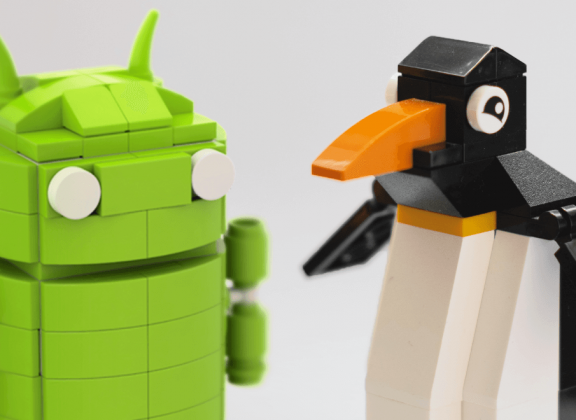IPTV/OTT set-top boxes are commonly powered by Linux and Android TV operating systems. To determine which operating system (OS) suits your needs, let’s compare the functionality of Linux and Android TV.
Functionality of Linux and Android TV
Both Linux and Android TV rely on the Linux kernel to provide power to the system. The kernel acts as a mediator between the hardware and software, which includes graphical shells and other applications.
Linux is an OS family that can operate on various hardware devices, such as servers, desktop computers, mobile devices, and TV boxes. Since the early 2000s, Linux media players have been widely used by IPTV/OTT service providers. In fact, 800 million set-top boxes around the world run on this software. Linux’s open-source nature allows users to use it without any restrictions.
On the other hand, Android TV is an implementation of the Android Open Source Project (AOSP) operating system that is optimized for home theater electronics, such as smart TVs, media players, projectors, and soundbars. Android TV-powered set-top boxes offer a simple user interface and Google Assistant, along with YouTube and the Google Play Store.
The choice between these two operating systems depends on the user’s priorities. Linux offers accessibility, availability, and dependability, while Android TV provides superior performance, user-friendliness, and a wealth of features.
It is possible to choose your own set-top box or use the one given by an IPTV/OTT provider. However, if the characteristics of the device offered as part of the package are inappropriate, it is probably best to select a different service provider.
Android TV
Android TV-powered set-top boxes offer a uniform user interface, specially designed for media consumption. YouTube, YouTube Music, Google Assistant, Chromecast built-in, and Google Play Store are some of the apps and services that come as standard on all Android TV devices. Google has been working on improving the functionality of set-top boxes for TV users for a long time.
In contrast, Infomir.store’s Linux-based set-top boxes only provide the basics, including a built-in gateway for accessing various features such as viewing files, turning on the TV, and opening a browser. Users can also arrange to have IPTV and over-the-top material from their service providers made available to them.
Linux OS
Linux-based media players are easy to operate and do not come preloaded with bloatware. The primary pre-installed apps are always model-specifically compatible.
Which digital media player should you get?
To select the right digital media player, carefully review the specifications required by an IPTV/OTT provider. If both Linux and Android TV set-top boxes meet the requirements, focus on the user interface. Android TV is ideal if you want a user experience similar to a smartphone and the ability to install your favorite applications. If you prefer to avoid Google’s services and want a streamlined user experience with minimal distractions, Linux is a good option.
Visit our website to learn more about the features offered by Linux OS and Android TV set-top boxes and make an informed buying decision by browsing the product catalog.
